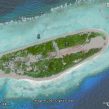
Taiwan Pivots in the South China Sea
Publication: China Brief Volume: 11 Issue: 11
By:

The latest escalation of tensions in the South China Sea has introduced new dynamics in the increasingly complex cross-Strait equation. The newest row over the disputed Spratly islets stands apart from previous conflicts in that it has invited an assertive U.S. response in support of “freedom of navigation.” Amid growing tensions between China, Vietnam and the Philippines, the U.S. Navy on June 1 deployed the guided-missile destroyer USS Chung-Hoon to the South China Sea and Sulu Sea to assert the right of free passage. While Taiwan, which is one of the claimants to the Spratlys, adopted a low-key approach to managing maritime disputes vis-à-vis China at the outset of the Ma Ying-jeou administration, the Ma government appears to be recalibrating its strategy toward the contested territories in an apparent effort to balance the changing strategic environment (See “Taiwan’s Spratly Initiative in the South China Sea,” China Brief, February 29, 2008).
Press release No.186, issued by Taiwan’s Ministry of Foreign Affairs on June 7, emphasized Taiwan’s support for the U.S. position on the principle of “freedom of navigation” (Mofa.gov.tw, June 7; Wen Wei Po [Hong Kong], June 8). On June 15, Yang Yi, spokesman for the Chinese State Council’s Taiwan Affairs Office, responded that China has indisputable sovereignty over the South China Sea islands and their surrounding waters, and that people from both sides of the Taiwan Strait have a shared responsibility to safeguard sovereignty over the islands and their surrounding waters (Xinhua News Agency, June 15). Yang’s statement has been interpreted by some Chinese media as Beijing’s desire to cooperate with Taiwan on managing maritime disputes in the region (Global Times, June 17).
Taiwan (Republic of China) and China (People’s Republic of China) both legally claim sovereign rights over the Spratly archipelago composed of islets and reefs in the form of a U-shaped line based on the same assertion that they are historically Chinese waters. The ambiguity in the two sides’ legal position has allowed China and Taiwan to maintain stability by avoiding the issue of sovereignty in maritime disputes. Yet, against the backdrop of increased Chinese assertiveness over territorial disputes in the South China and East China Sea in recent years, the Ma government appears to be moving away from this ambiguous stance. By emphasizing support for the principle of “freedom of navigation” along strategic sea lanes in the South China Sea, the Ma administration is possibly committing to a more robust military presence in the region. Indeed, the local media has reported that Taiwan is considering deploying missile boats and tanks to the disputed islets (United Daily News [Taiwan], June 14).
The Taiwanese Navy is also reportedly deploying a naval fleet to Taiwan-controlled Taiping Island—the biggest island in the Spratlys—and the Pratas archipelago on a routine mission, possibly later this month. Taiwan operates an airstrip with a 3,800-foot-long, 100-foot-wide cement path on Taiping Island (See “Taiwan’s Spratly Initiative in the South China Sea,” China Brief, February 29, 2008). According to United Daily News, the missions, which are supported by the coastguard, normally take place at least three times a year: March, June and September. A Taiwan naval spokesperson cited by AFP stated that, “The scheduled missions will go unchanged. Otherwise there won’t be enough logistic supplies to the coastguards stationed there” (Channel News Asia, June 14; United Daily News, June 15). The fleet will be formed by three vessels that will reportedly include the Navy’s Cheng Kung class frigate [Perry] and Zhong He class [Newport] (LST) (United Daily News, June 15). The Taiwanese coastguard has 130 men stationed on Taiping Island; however, according to Taiwan’s Defense Ministry spokesperson David Lo, “currently the coastguards in Nansha (Spratlys) and Tungsha (Pratas) are only armed with light weapons” (TodayOnline, June 13).
The Ma government’s emphasis on the “freedom of navigation” in the South China Sea is a subtle but significant departure from the administration’s low-key approach and could have important implications for cross-Strait relations. Coupled with the Taiwanese government’s plan to possibly deploy patrol vessels and additional military assets on the disputed islets may signal a rethink and a possible shift in the administration’s position on maritime disputes vis-à-vis China. Indeed, in spite of the growing tensions and conflict in the South China Sea, since President Ma came into office in 2008, Taiwan had been relatively quiet about the South China Sea. This led some observers to suspect that the Ma administration was leaning too much toward China (China Post, April 18). If, in fact, the Ma administration intends to draw a distinction between Taiwan’s and China’s interpretation of its territorial claim, it would demonstrate Taiwan as an independent claimant to the dispute. This will likely lead to more friction between Taiwan and China over competing maritime claims. Amid growing concerns about his administration’s increasing tilt toward China, Ma’s shift may be seen as a sign of reassurance by the current government to regional neighbors and the United States that it will maintain a balance while still pursuing cross-Strait rapprochement.
[Ed. note: The image attached to this article was updated on June 22, 2011. The previous image was, in fact, the PRC’s airstrip on Woody Island (Yongxing Dao).]





